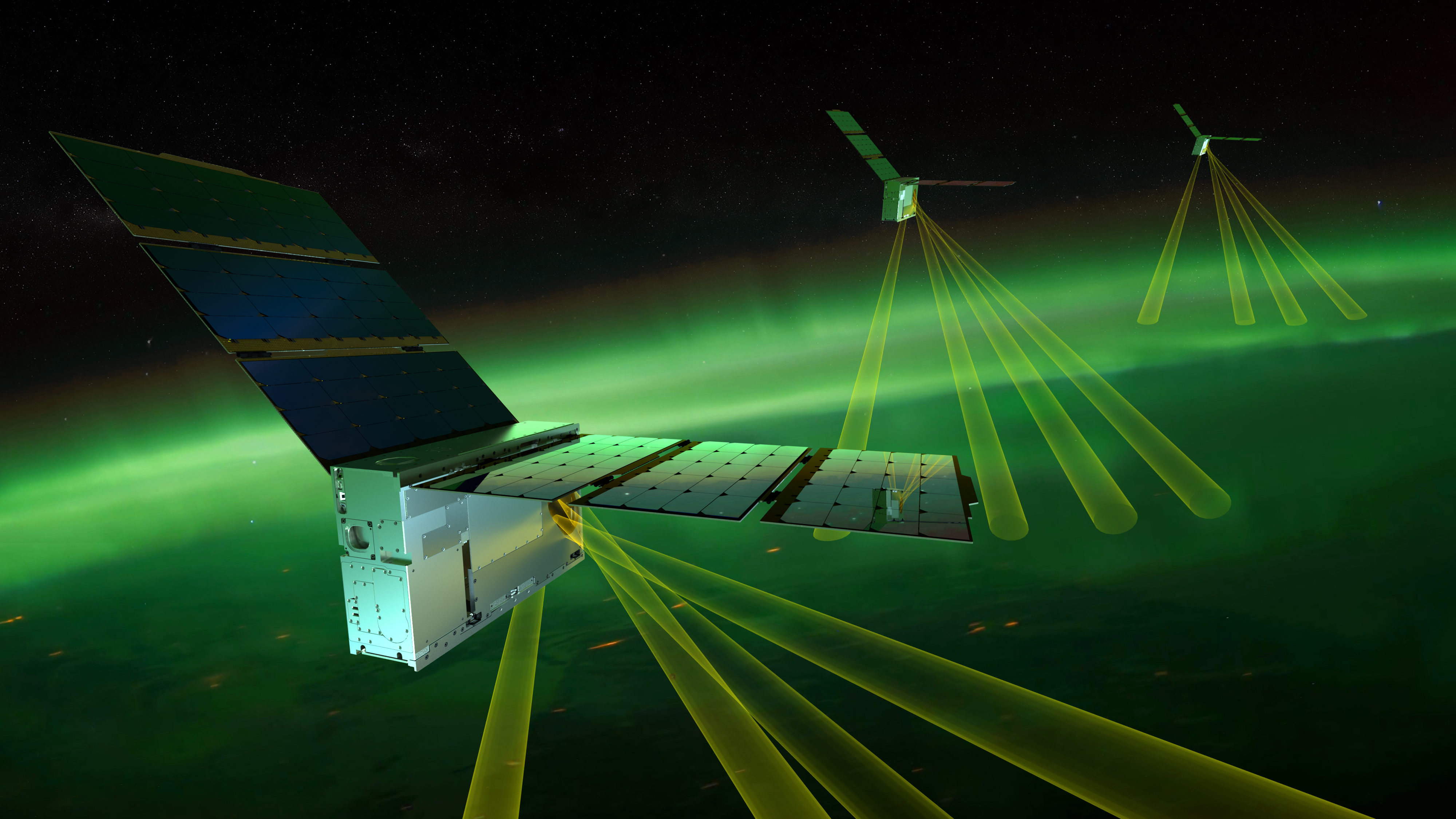NASA has given the Johns Hopkins Applied Physics Laboratory (APL) and its collaborators the green light to begin carrying out the Electrojet Zeeman Imaging Explorer (EZIE) — a mission to characterize the electric currents that link Earth’s aurora to the planet’s magnetosphere.

”We are thrilled to have passed another major milestone in the development of this highly innovative mission,” said EZIE Principal Investigator Sam Yee, a space physicist at APL. “The technique that EZIE will use to image electrical currents in the upper atmosphere for the first time will open the door to major discoveries and potentially exciting new missions as well.”
Slated to launch no earlier than 2024, EZIE will send a trio of SmallSats to study the auroral electrojets, which are electrical currents flowing 60-90 miles (95-145 kilometers) above Earth’s poles and are just a small portion of the enormous electrical current that flows between Earth’s magnetosphere and the planet.
Using drag from Earth’s upper atmosphere to control their speed, EZIE’s three spacecraft will orbit Earth from some 260-390 miles (425-675 kilometers) for 18 months, collecting magnetic information and imagery to help characterize how the electrojets’ structure evolves over time and across the globe.
“EZIE is a fast-paced mission, moving from preliminary designs to launch in just a little over three years,” said EZIE Program Manager Nelofar Mosavi, a space physicist at APL. “That means the gap between mission milestones is very short, but the team has been up to the task, working hard to overcome many technical challenges to be ready for each review.”
In May, the EZIE team went through a preliminary design review, which covered everything from spacecraft design and mission requirements to estimated costs and outreach plans. Held both virtually and in person for three days at APL, which manages the mission and will build and operate the spacecraft, the review included a panel of experts tasked by NASA to evaluate the information and assess the mission’s progress.
After a final presentation and mission evaluation on June 28, NASA representatives gave the team the go-ahead to proceed to the next stage of development, which will provide a detailed description of the final spacecraft and mission design before construction can start.
With each spacecraft carrying an instrument built by the Jet Propulsion Laboratory (JPL), EZIE will capture images of Earth’s magnetic field and the auroral electrojets by exploiting a physical phenomenon called Zeeman splitting — the separation of spectral lines of light due to a nearby magnetic field. By capturing this information, the mission will shed new light on the vast electrical current system connecting Earth and space as well as any other planet with a magnetosphere.
“EZIE will end five decades of debates about how Earth, our home, interacts with the surrounding space environment,” said EZIE Project Scientist Jesper Gjerloev, a space physicist at APL. “This mission is going to open the window to a greater understanding of how magnetized planets interact with space, which is not only fascinating in its own right but key for future space weather forecasting.”
Funding for EZIE comes from the Heliophysics Explorers Program, managed by the Explorers Program Office at NASA’s Goddard Space Flight Center in Greenbelt, Maryland. EZIE is led by APL, which designed and will build and manage the mission, in collaboration with JPL and Blue Canyon Technologies (BCT).
Related Topics
For Media Inquiries
For all media inquiries, including permission to use images or video in our gallery, please contact:
Michael Buckley
All Media Resources

